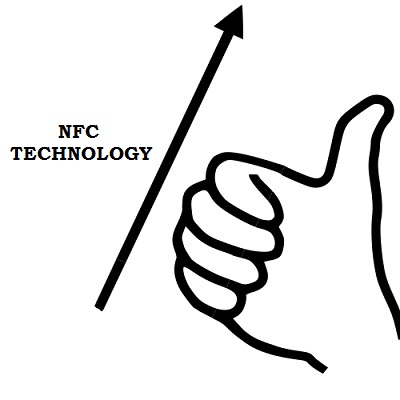The company behind the tremendously popular Firefox has started an experimental pilot project.
Mozilla has just announced that it has launched an experimental pilot project called the Mozilla Location Service, which provides geolocation lookups that are based on data from Wi-Fi access points and publicly observable cell towers.
This concept behind the service is that it croudsources and collects this information through mobile.
The idea is that by way of public hotspots for Wi-Fi, and through cell phone towers, the service crowdsources and collects geolocation information to make it possible for smartphones that have weak GPS signals and laptops that don’t have that technology to be able to rapidly pinpoin their approximate location. As of yet, it has not been made entirely clear how it will be possible for the devices to be able to identify themselves, but there are two APIs being offered for the integration of this service into applications.
The geolocation service remains in its earlier stages, but it is progressing quickly.
 In order to take part in this service and contribute to its data, users can add the dedicated Android MozStumbler app from Mozilla into their devices. That app is behind the data collection, but it also has a gamified element that gives users the opportunity to enjoy the experience. In this game, they can either contribute anonymously, or they can compete against others on the leaderboard. According to Mozilla, the service is already experiencing a rapid evolution, but that there will soon be a more full featured experience that will be available to device users.
In order to take part in this service and contribute to its data, users can add the dedicated Android MozStumbler app from Mozilla into their devices. That app is behind the data collection, but it also has a gamified element that gives users the opportunity to enjoy the experience. In this game, they can either contribute anonymously, or they can compete against others on the leaderboard. According to Mozilla, the service is already experiencing a rapid evolution, but that there will soon be a more full featured experience that will be available to device users.
That said, Mozilla has said that it is nowhere near its final stage. This geolocation service remains in the earliest levels and provides only the most basic levels of coverage within select locations due to the generosity of the earlier contributors and adopters of the service. At the same time, the company is committed to ensuring that the privacy elements of the service are improved to a meaningful degree for all of its participants, so that users can be certain that even as they offer the data surrounding heir location, their own privacy remains safe and secure.
The growth of the use of this tech has been quite slow but people are adopting near field communication.
It has been slightly over one year since mobile payments companies, such as banks and network operators, had been doing everything they could to make sure that they had worked NFC technology into their systems so that they would be able to keep up with what they felt was an overwhelmingly large opportunity as enabled devices would flood the marketplace.
They were under the impression that Apple would soon be releasing an enabled device.
Since that time, several Apple devices have been launched and not one of them has included the NFC technology that had been anticipated. Though the preparations for near field communications had skyrocketed, and the tech had been worked into everything from mobile wallets to marketing, the growth of the penetration of the actual devices occurred much more slowly than anticipated.
iPhones still do not feature NFC technology among their options and companies have had to look to other avenues.
 Google Wallet, Isis, and even MasterCard have all recently announced that although they have not abandoned their use of NFC technology, they are implementing additional methods in order to make sure that their services would be accessible by a larger number of consumers. For the most part, this has meant that QR codes – the two dimensional barcodes that had once been believed to have limited days left because of the upcoming popularity of near field communication tech – have been added to these massive systems.
Google Wallet, Isis, and even MasterCard have all recently announced that although they have not abandoned their use of NFC technology, they are implementing additional methods in order to make sure that their services would be accessible by a larger number of consumers. For the most part, this has meant that QR codes – the two dimensional barcodes that had once been believed to have limited days left because of the upcoming popularity of near field communication tech – have been added to these massive systems.
That said, it appears that all is not lost for NFC technology. The majority of the latest Android smartphones do contain these chips and as they start to spread throughout the world – and dominate the shipments of smartphones on a global scale – it has meant that systems relating to this tech are starting to launch. Though they haven’t taken off at the rate that had been initially expected, they are now experiencing a healthy, moderate growth.
In fact, according to Strategy Analytics market research, though the expectations for the demand for NFC technology have been reduced, it is still estimated that by the end of 2017, payments using this tech will have reached $48 billion.
 In order to take part in this service and contribute to its data, users can add the dedicated Android MozStumbler app from Mozilla into their devices. That app is behind the data collection, but it also has a gamified element that gives users the opportunity to enjoy the experience. In this game, they can either contribute anonymously, or they can compete against others on the leaderboard. According to Mozilla, the service is already experiencing a rapid evolution, but that there will soon be a more full featured experience that will be available to device users.
In order to take part in this service and contribute to its data, users can add the dedicated Android MozStumbler app from Mozilla into their devices. That app is behind the data collection, but it also has a gamified element that gives users the opportunity to enjoy the experience. In this game, they can either contribute anonymously, or they can compete against others on the leaderboard. According to Mozilla, the service is already experiencing a rapid evolution, but that there will soon be a more full featured experience that will be available to device users.
 Google Wallet, Isis, and even MasterCard have all recently announced that although they have not abandoned their use of
Google Wallet, Isis, and even MasterCard have all recently announced that although they have not abandoned their use of 